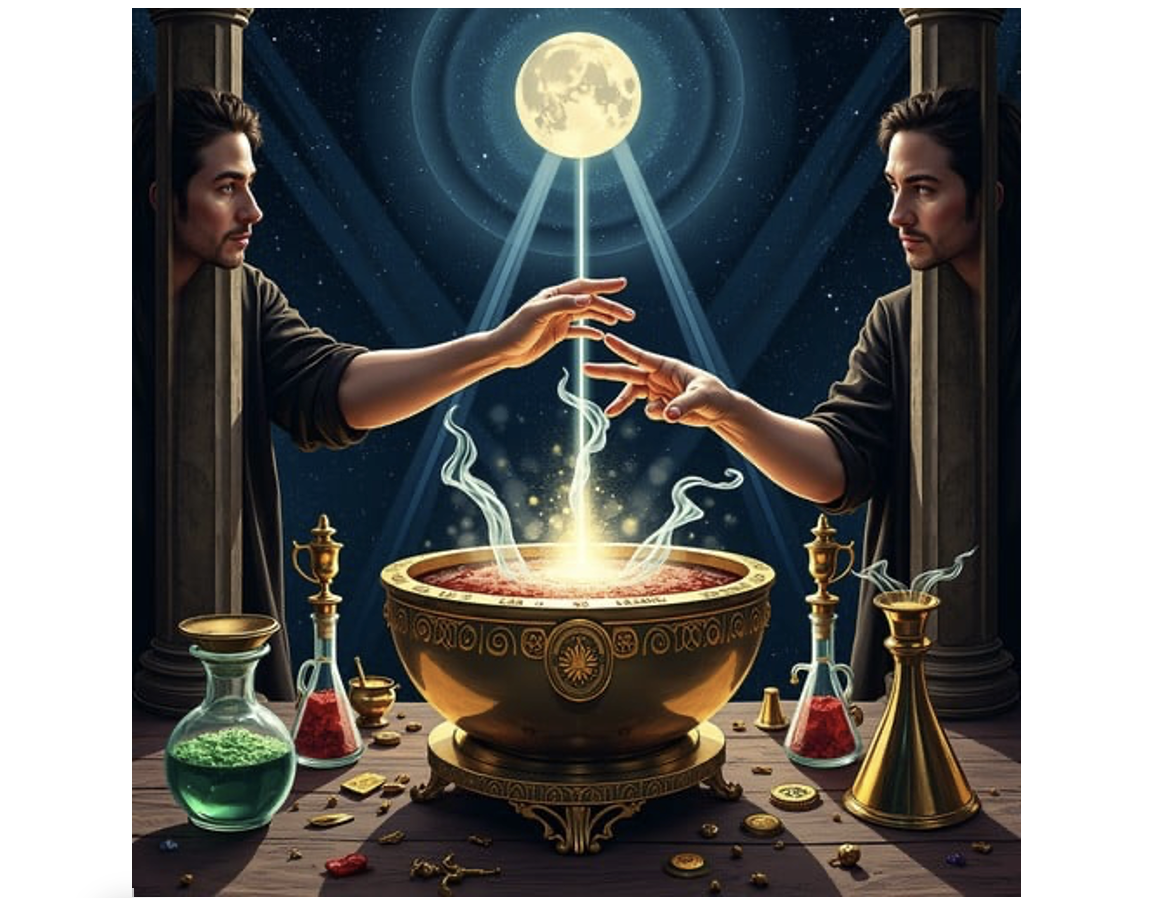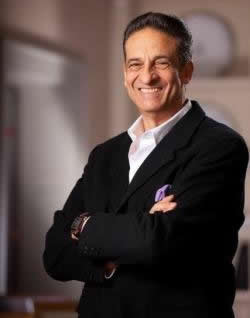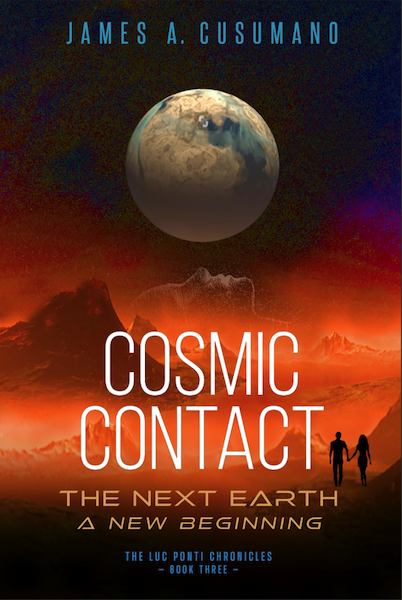Alchemy to Transcendent Physics—A Historical Perspective Evolution of Scientific Inquiry to the Frontier of Consciousness

Alchemy to Transcendent Physics—A Historical Perspective
Evolution of Scientific Inquiry to the Frontier of Consciousness
James A. Cusumano
“I’m not interested in preserving the status quo. I want to overthrow it.”
Niccolo Machiavelli—“The Prince” (1532)
Introduction
The trajectory of scientific thought, spanning centuries, is a testament to humanity's restless curiosity and its relentless pursuit of truth. Beginning in the shadowy workshops of alchemists and the speculative treatises of natural philosophers, the methods and aims of science have undergone radical transformations, creating enormous value for humanity. Each epoch has brought a new lens through which to perceive reality, often propelled by both necessity and the brilliance of a few singular minds.
Today, as we grapple with the enigma of consciousness and its relationship to the physical world, we stand on the brink of yet another paradigm shift—a movement from the solid ground of quantum physics toward the as-yet-unmapped territory of what some have begun to call Transcendent Physics.[1],[2]
Alchemy to the Scientific Method
In the 16th century, the prevailing approach to understanding nature was deeply entwined with alchemy. Alchemy, with its roots in ancient Egyptian and Greco-Roman traditions, was as much a spiritual practice as it was protochemistry. Many so-called alchemists sought to transform base metals into gold and concoct elixirs of immortality. But the true alchemists—perhaps, few in number— like the Wisdom Seekers of the East, sought to use their powers to connect with Universal Consciousness and unravel the secret correspondences between the macrocosmos and the microcosmos.
Methods at the time were a patchwork of tradition, intuition, and experiment, with minimal formal structure. The processes were subjective, often secretive, and not always reproducible. Alchemical knowledge was guarded, allegorical, and communicated through secretive arcane symbols. Despite its mystical veneer, alchemy did plant the seeds of experimental inquiry; alchemists' meticulous documentation of processes and results laid the groundwork for later systematic investigations.
The 17th century, however, ushered in a revolution. Figures such as Francis Bacon articulated the principles of the Scientific Method: observation, hypothesis, experiment, analysis, and predictive future results. This methodological shift marked a decisive break from alchemy’s esoteric traditions. Inquiry became public, collaborative, and above all, reproducible. Nature was no longer a veiled mystery to be divined, but a system to be interrogated, measured, and explained.
The Age of Physics: Galileo to Newton
With the dawn of this scientific method, the study of physical phenomena was transformed. Galileo Galilei, often called the “father of modern science,” pioneered the use of mathematical models and empirical tests. His observations of celestial bodies through the newly-invented telescope, and his experiments with falling objects, undermined centuries-old Aristotelian dogma.
Isaac Newton, building upon Galileo’s foundation, synthesized the laws of motion and universal gravitation. With Newton’s "Principia Mathematica" (1687), the universe became a vast, deterministic mechanism—a clockwork governed by precise mathematical laws. Newtonian physics, or classical mechanics, provided the scaffolding for nearly all subsequent technological and scientific advances for over two centuries.
This era was characterized by a confidence in the power of reason and accurate measurement. The boundaries of reality were thought to be penetrable by human intellect, and the universe was, in principle, considered fully knowable.
The Quantum Revolution: Shattering Certainty
By the late 19th and early 20th centuries, cracks began to appear in the edifice of classical physics. Phenomena at the atomic and subatomic scales could not be reconciled with Newtonian mechanics. Enter quantum physics—a discipline inaugurated by Max Planck’s discovery of energy quanta, and transformed by Albert Einstein, Niels Bohr, Werner Heisenberg, and Erwin Schrödinger.
Quantum mechanics revealed a world that defied classical intuition. Particles behaved as both waves and particles, existing in a superposition of states until measured. Reality, it seemed, was not deterministic, but probabilistic—subject to the uncertainties embodied in Heisenberg’s Uncertainty Principle. The observer could no longer be regarded as a passive spectator; their measurements influenced the outcomes. This strange new paradigm forced physicists to confront the limits of objectivity and the possible role of consciousness in collapsing quantum states.
Consciousness and the Limits of Physics
Despite its predictive power and its centrality to modern technologies, quantum physics struggles to address the most profound of all mysteries: consciousness. How does subjective awareness arise from the interplay of physical particles? Is mind a property emerging from matter, or is it a fundamental aspect of reality?
Attempts to answer these questions have taken many forms: some, like the Copenhagen Interpretation, accept the limitations of our knowledge; others, such as the many-worlds hypothesis posit infinite branching universes to account for quantum indeterminacy. Yet, none have fully unlocked the riddle of subjective experience.
As neurobiology and cognitive science map the architecture of the brain, the "hard problem"—the question of why and how qualia (subjective experiences) arise—remains unresolved. Here, the rigorous reductionism of physics meets the intractable mystery of the Self.
Toward Transcendent Physics: The Next Leap
To fully explore and perhaps harness the potential of consciousness, a growing chorus of philosophers and scientists is calling for a transition beyond quantum physics—a leap into what some describe as Transcendent Physics.[3]Currently, much of this emerging field is speculative, but it draws upon quantum physics, the philosophical insights of both Eastern and Western Wisdom, the findings of parapsychology and metaphysics, and unresolved anomalies of current scientific paradigms.
Based on findings in the abovementioned fields, we can ask what might define transcendent physics?
- Integration of Subjectivity: Rather than relegating consciousness to an epiphenomenon, transcendent physics might treat it as an intrinsic aspect of reality, intertwined with the fabric of the cosmos.
- Non-Locality and Interconnectedness: Extending the quantum notion of quantum entanglement, this new physics may explore the possibility that consciousness itself is non-local, distributed, and even collective.
- Multidimensional Frameworks: Beyond the familiar dimensions of space and time, transcendent physics could propose realms or planes where consciousness operates, potentially accessible through altered states or new advanced technologies.
- Participatory Reality: The observer is not only a measurer but potentially a co-creator of reality, blurring the lines between subject and object.
These are, for now, the contours of a vision rather than a consensus. The transition to transcendent physics will` require new mathematics, novel experiments, and a willingness to question the very foundations of the scientific enterprise, and more fundamentally, the scientific method.
Challenges and Opportunities
This bold frontier is not without its critics. Many scientists caution against the dangers of pseudoscience and the abandonment of empirical rigor. Yet, history reminds us that each revolution in thought—from the alchemy to the quantum physics—was once derided as impossible or unscientific.
The pursuit of transcendent physics invites us to revisit ancient questions with new eyes. It suggests that the next great leap in science may not be outward, into the reaches of space, but inward, into the depths of the mind, and more specifically, the soul or true self. If we are to understand and access the full potential of consciousness, we must be prepared to rethink not just our theories, but the very nature of inquiry itself.
Conclusion
The journey of science is a journey of transformation—of our methods, our understanding, and our sense of possibility. From the cryptic laboratories of alchemy to the elegant equations of Newton and the paradoxes of quantum mechanics, we have repeatedly reinvented our relationship with the universe. Now, as we confront the mystery of consciousness, science stands before a new threshold. The move from quantum to transcendent physics promises not only fresh insights into the cosmos, but perhaps a deeper understanding of ourselves. What shape it will ultimately take remains to be seen. Yet, as always, the adventure of discovery calls us onward.

